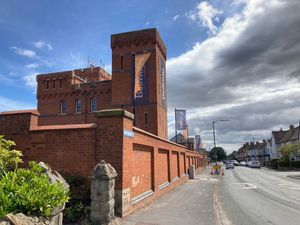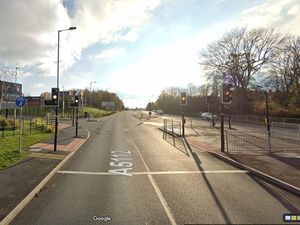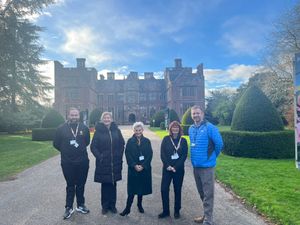House builder hires experts to look for more unexploded bombs at Shrewsbury development
A house builder has taken on a specialist company to see whether any more unexploded bombs could remain at a housing development
Last month bomb disposal experts were called to the Copthorne Keep development in Shrewsbury three times when mortars were found, leaving residents worried there could be more.
Now, developer Bellway says it has taken precautionary actions to identify further devices that may be present.
Spokesperson, Paul Lawler said: "Following the discovery of unexploded mortars on the former Copthorne Barracks site, a military team was called to safely dispose of the devices. The safety of our residents, staff, contractors and the wider community remains our priority.
"Bellway has engaged a specialist company to assess whether any further devices could be present on the development. Searches have taken place in the construction and all public areas at Copthorne Keep. This company will remains on site while groundworks on the remaining plots are completed and will carry out thorough checks on each.
"We are currently communicating with residents to carry out a survey of gardens to ensure no further mortars are present. The area underneath each home has already been excavated when the foundations were put in place."
He said Copthorne Barracks was an Army base which did not hold ammunition, and a risk assessment during the planning process deemed the chances of live ammunition being present as low.
"It is thought the items found over the past week may have been brought back from a training exercise. We hope the ongoing presence of the specialist team on site will provide some reassurance."

One company based in Hereford, SafeLane, says it works across the country with development and construction firms.
"In Shropshire’s neighbouring county town of Hereford, regular ordnance finds are discovered on the former munitions site in Rotherwas where development and redevelopment of what is now an industrial park ensures the bomb squad are regularly called in," Research Manager Emily Damerell, said.
"SafeLane Global tries to encourage all constructors, infrastructure workers, council planning departments and even architects to consider the risk of unexploded ordnance ahead of any intrusive ground or marine sited works.
"The UK was extensively bombed during the world wars but contributing equally to the contamination that remains and affects our land and waterways in Britain is the fact so much of our nation has been used for military training and manufacturing purposes. At best it’s naïve to assume a site won’t be contaminated. Where there is a lower risk of discovering ordnance, a watching brief is a great solution. Where there is a higher risk, we survey and clear and ensure works remain on time and critically, safe.”
Shrewsbury was chosen by the War Department as a central location for a new barracks with construction beginning in 1877. Completed by 1881, the resultant military facility included a hospital and married quarters, stabling and stores and was named Copthorne Barracks.
The facility was actively used by the Army until 2014.




